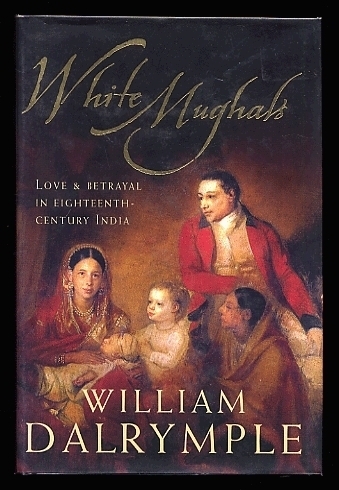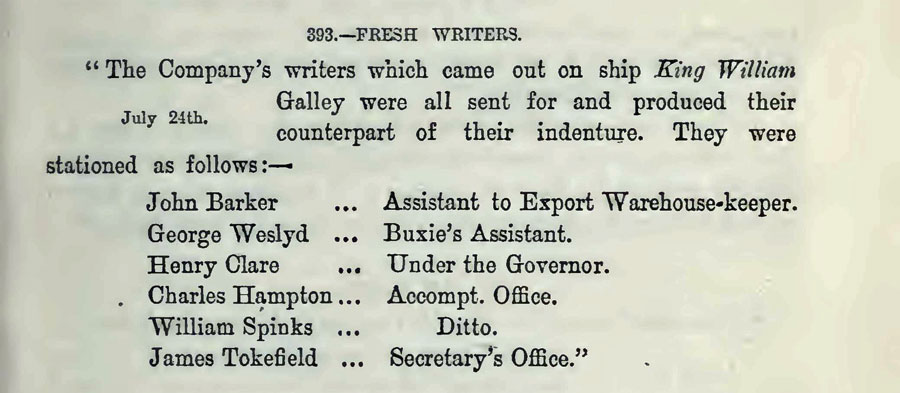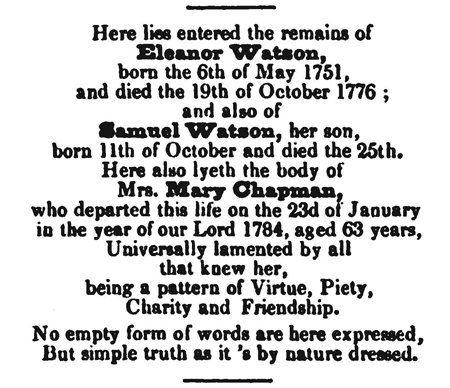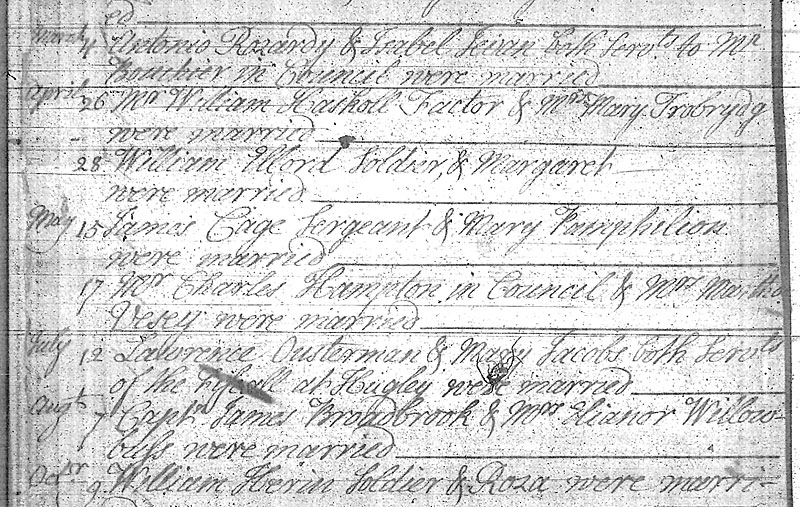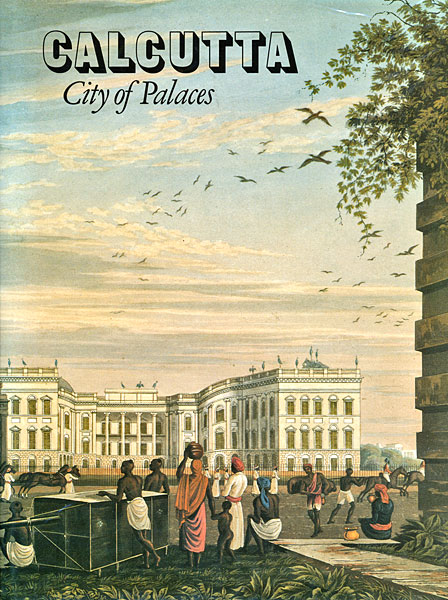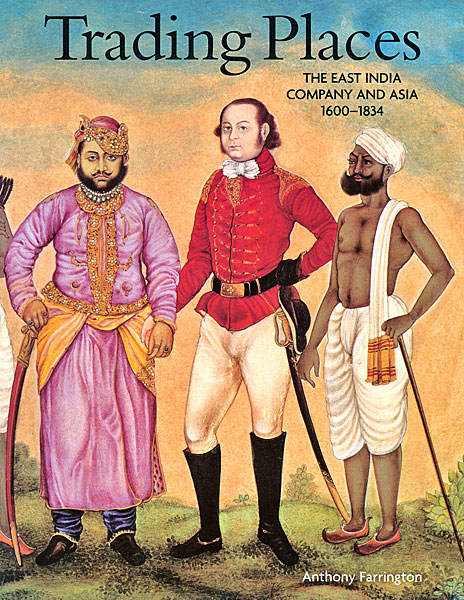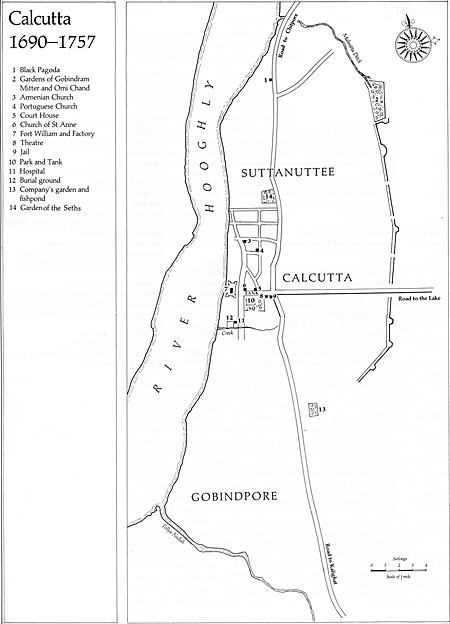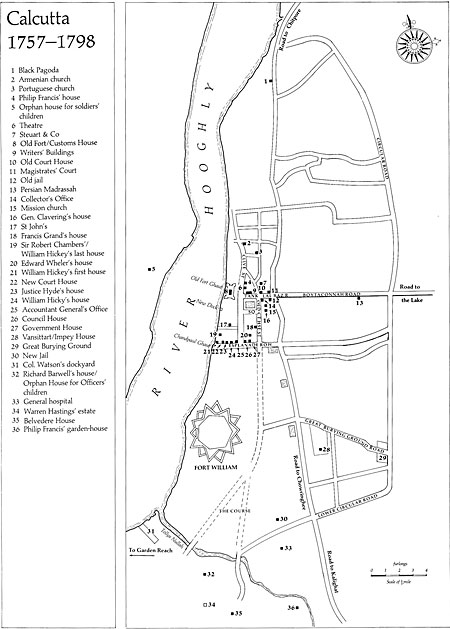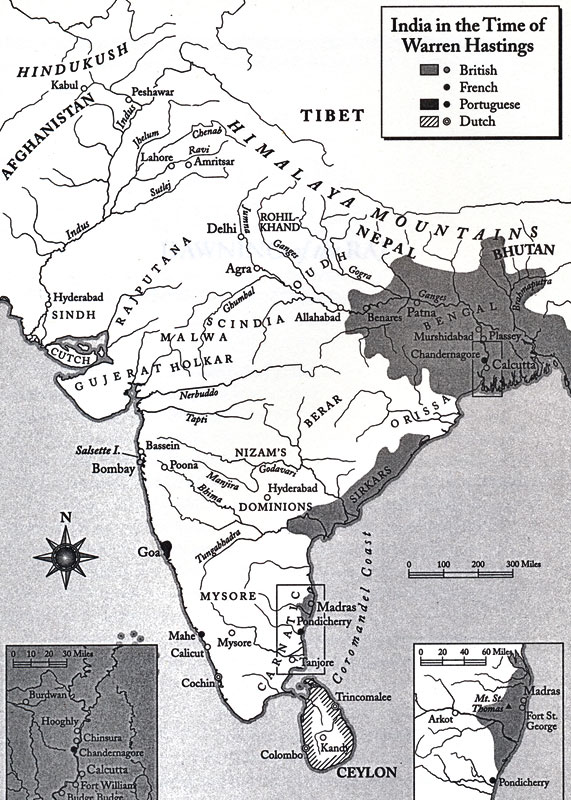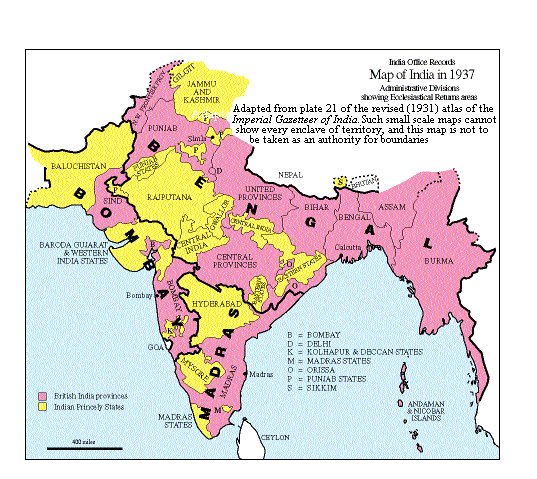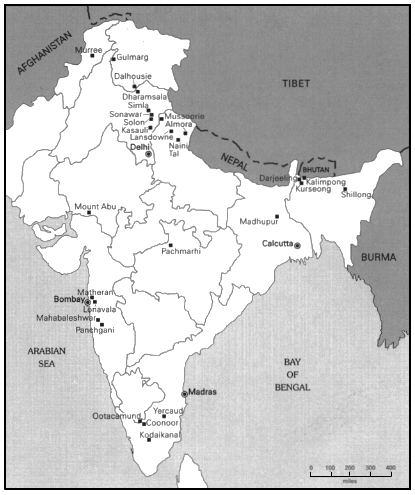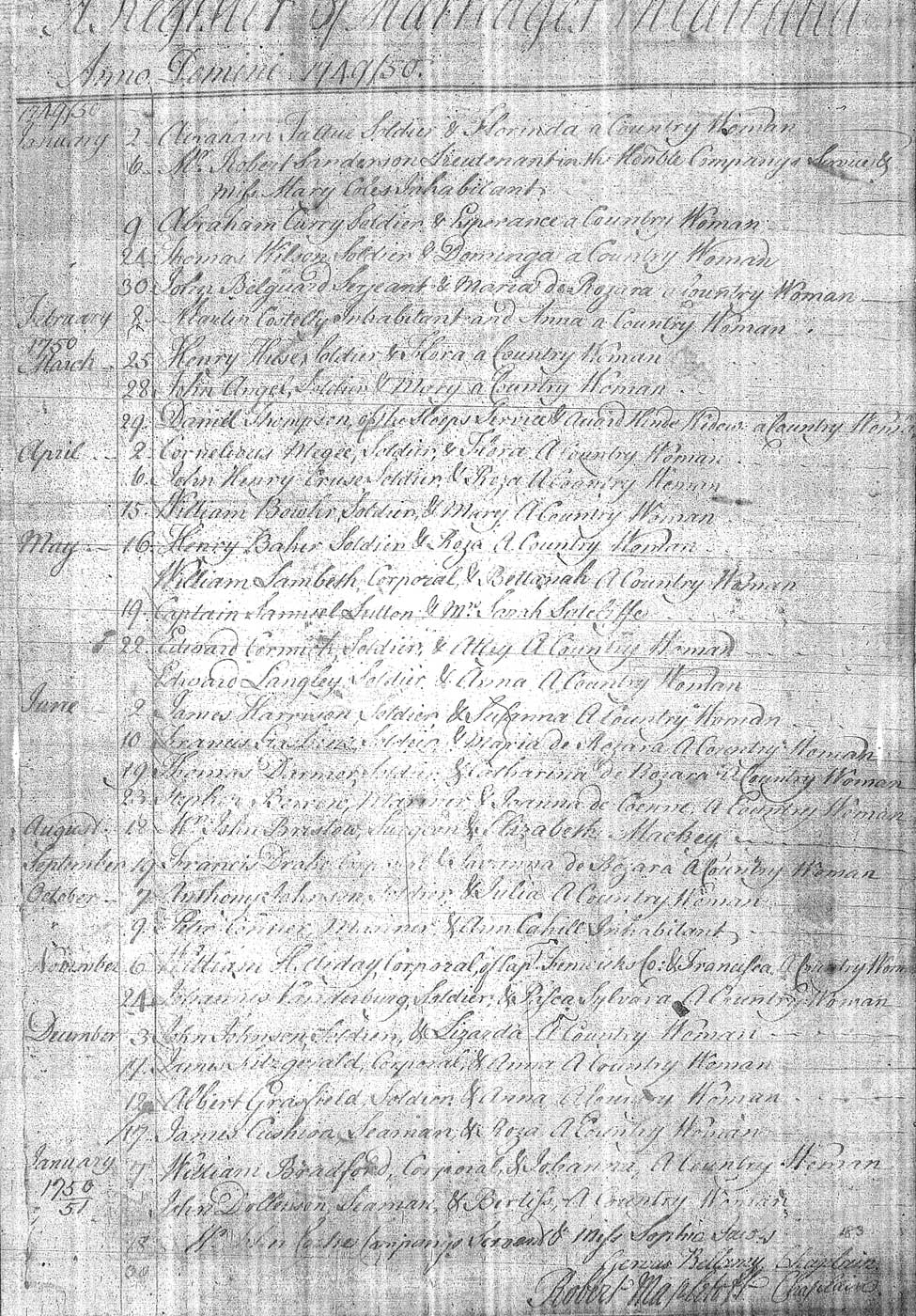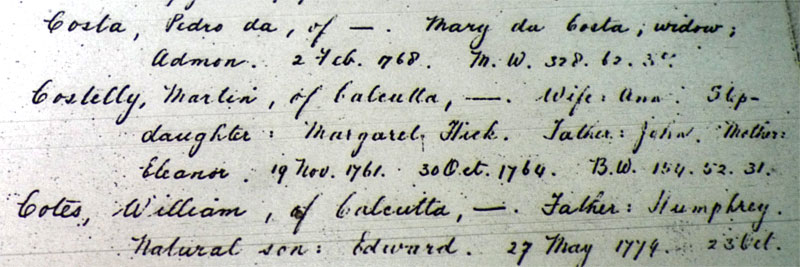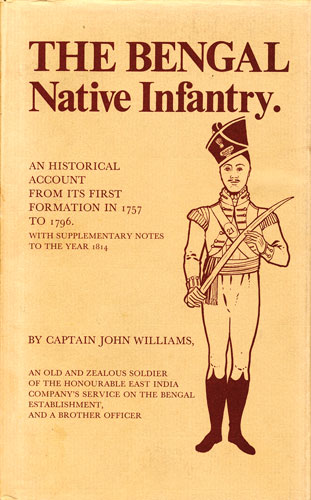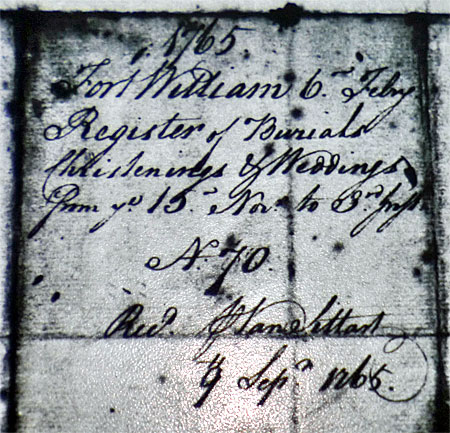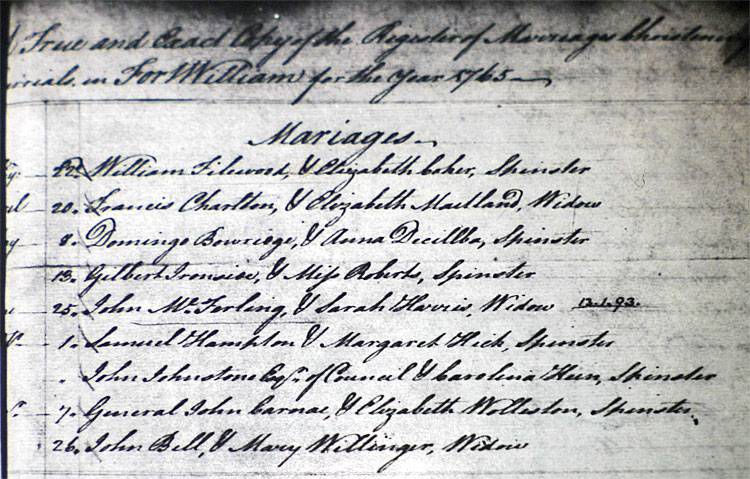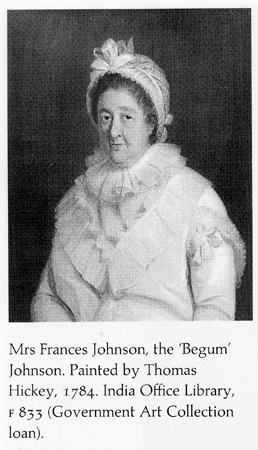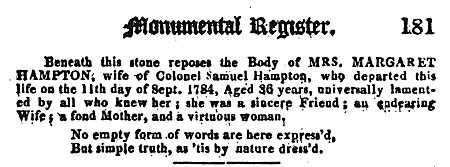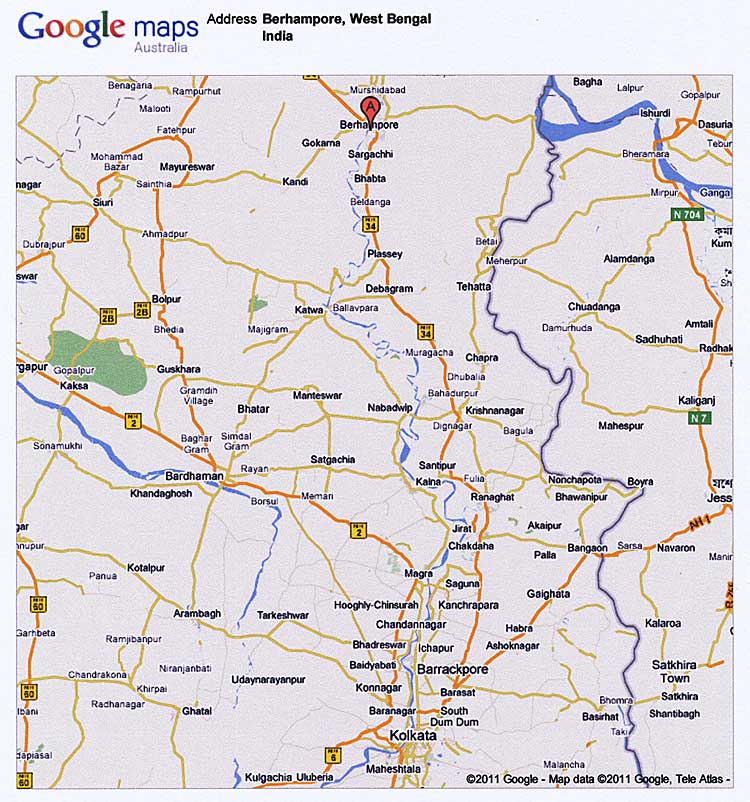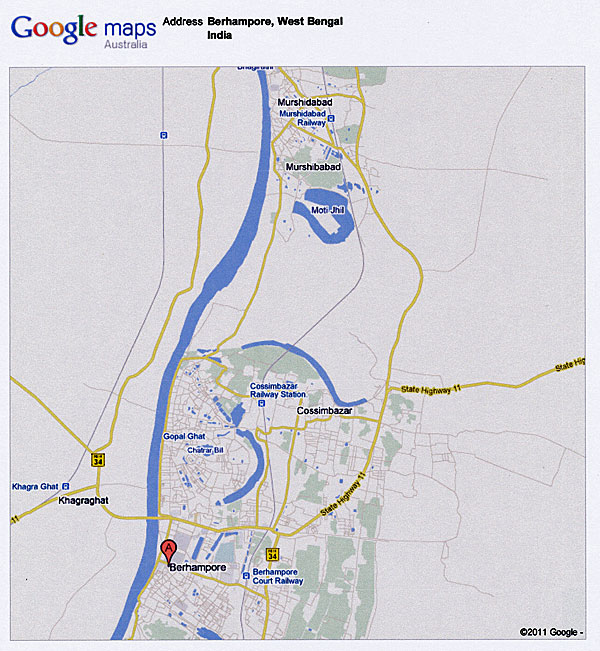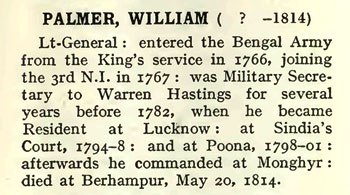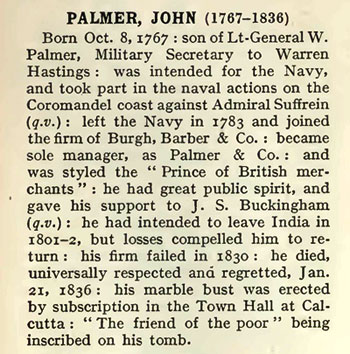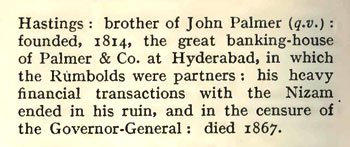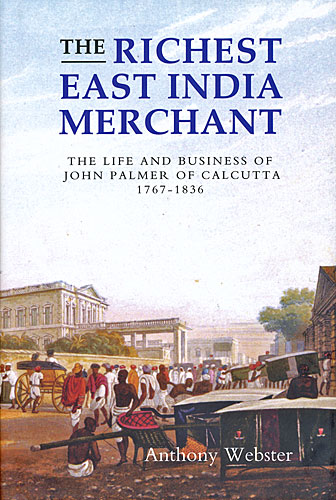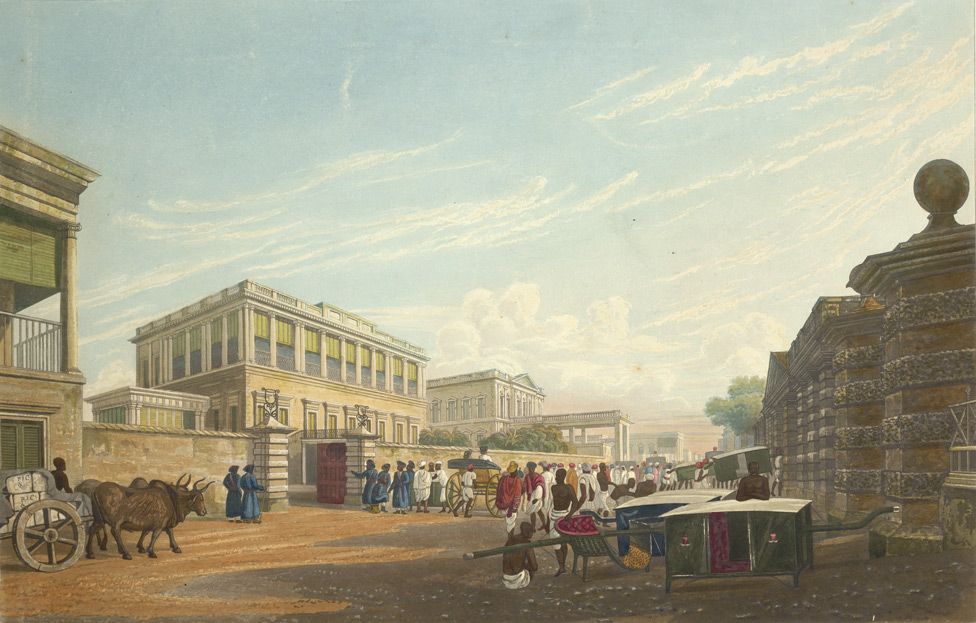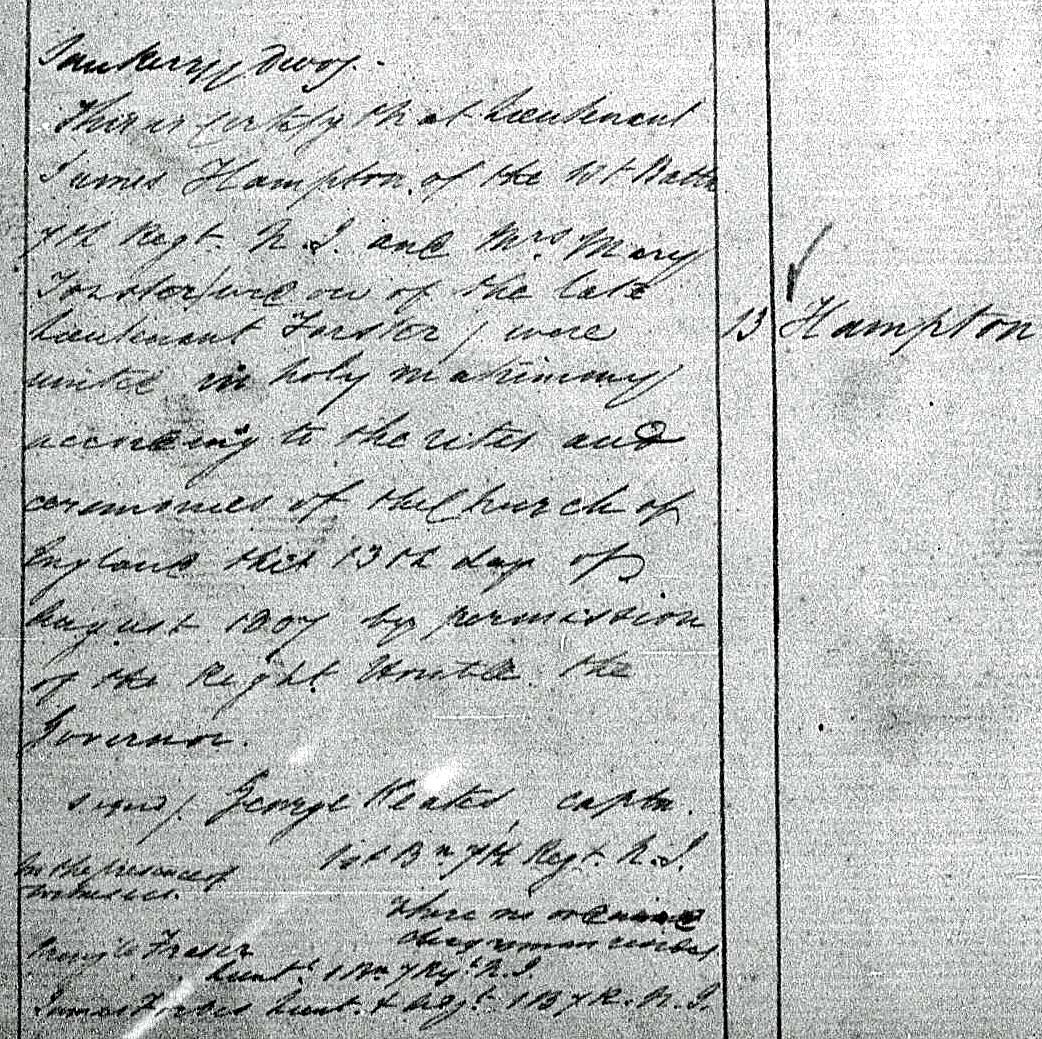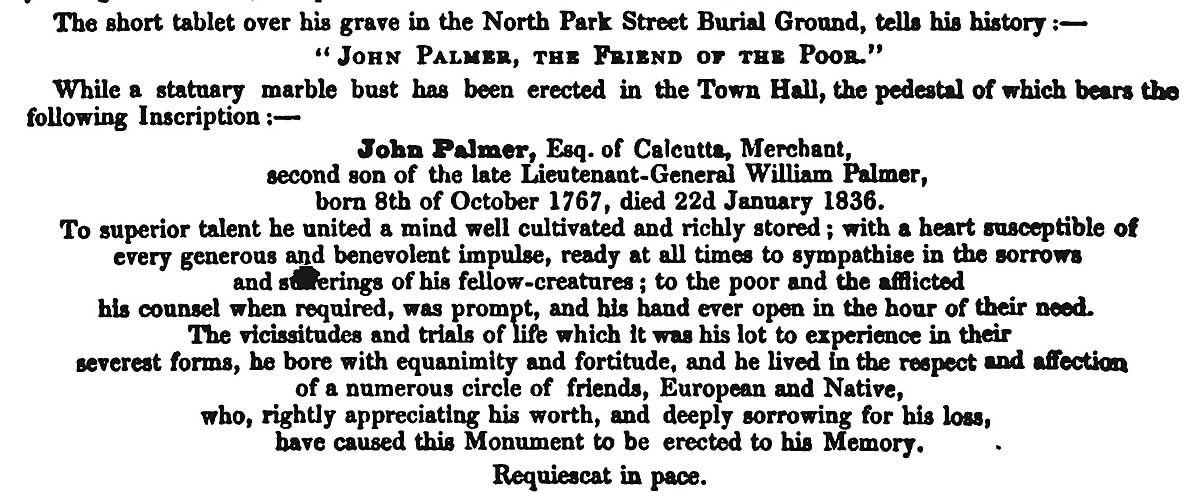|
last updated 27 June 2015
ANCESTORS IN BRITISH INDIA (1710 - 1910) & CORNWALL (1680 - 1840)
HAMPTON, HICK, PALMER CHRONOLOGY AND DOCUMENT LINKS (Calcutta 1700s to early 1800s)
Next: Locke, Middlecoat Hampton & Burton narrative, photos & document links (Madras & England 1800s to early 1900s)
More Recent Ancestors (with portraits) census page links all bmd links
Earlier Middlecoat ancestors in Tregony, Cornwall
|
|||||||||||||||||||||||||
|
Ancestors of Lt Col John Adolphus and Georgiana Ernstin ("Gem") Burton
An overview chart linking five generations of Burtons, Middlecoats, Lockes & Hamptons in the 1700s / 1800s in British India.
|
|||||||||||||||||||||||||
|
|
|||||||||||||||||||||||||
|
CIAOFAMIGLIA
THE EARLY CALCUTTA (BENGAL / BRITISH INDIA) CONNECTIONS
The British Library glossary of special terminology used in India during the British Administration.
|
|||||||||||||||||||||||||
|
|
|||||||||||||||||||||||||
|
History of British Rule in India
or try this
|
|||||||||||||||||||||||||
|
|
|||||||||||||||||||||||||
| EARLY FAMILY EVENTS | |||||||||||||||||||||||||
|
Charles Hampton (to be Adrian's 6xgrt Grandfather) travels to Calcutta on the King William Galley in 1710.
|
The King William galley - 400 tons, 80 men, 30 guns. Mustered at Portsmouth, the 10th January, 1709 (old calendar), by Mr. Blackly. Nehemiah Winter, C ; Stephen Lashington, 1st M; Josia Mingo, 2nd; John, Peele 3rd ; James Winter, 4th, John Winter, P; Oliver Mow, D; 74 other officers and sailors, 44 soldiers.
Passengers:—Chas. Hampton, Jas. Tokefield.
Log 3 Begins Friday, 4th Nov. 1709; left Plymouth, Tuesday 10th Feb. 1709; sighted Canaries, Wednesday, 1st March; arrived Cape, Wed. 10th May 1710; left Cape, Wed. 17th May; arrived Madras, Wed. 5th July; left Madras, Friday, 7th July; arrived Hijili, Sunday, 16th July 1710.
Source: "Early Annals of the English in Bengal" v2 p1 p346
The National Archives IOR section hold several original logs / journals from the King William.
|
||||||||||||||||||||||||
|
July 24 1710 Charles Hampton,
|
one of the indentured "fresh writers" recently arrived a week earlier on the "King William" (who seem to have expanded from 2 to 6), presents his credentials:
The East India Co Court Minutes for 1708-10 include 4 references to Charles Hampton - firstly noting that his petition to be a writer has been referred, secondly that he has been elected to be a writer, thirdly that his security has changed and finally that his security has been approved. The petition, guarantee papers and indenture have not survived, dashing our hope to find a link to his age and origins in England.
Originally an indenture, or "a contract for services," was written twice on a sheet of parchment, which was then cut in two in a zigzag, or "notched" line. Each party took one half, and the genuineness of a document of indenture could be proved by juxtaposition with its counterpart.
|
||||||||||||||||||||||||
|
18 January 1714-15, Charles Hampton
|
earning £5 a year as a Writer in "ye Secretary's Office" in the "List of the Hon Companys Servants in the Bay of Bengall According to their Precedencies and Stations, Calcutta, the 18th January 1714-15"
Source: "Early Annals of the English in Bengal" v2 pt1 p205. "Ye" meant and was pronounced "the".
|
||||||||||||||||||||||||
|
1710 - 1731 Charles Hampton appears in
|
the Lists of Bengal covenanted civil servants now held in the IOR section of the British Library (Bengal Civil Servants early to mid 1700s, L/F/10/1), who kindly researched this information for us -
January 1714 - Writer December 1715 - Factor December 1718 - Junior Merchant January 1722 - Senior Merchant 1725 - Second at Cossimbazar 1727 - Buxey (see below) / Jemindar / Storekeeper January 1728 - Eighth in Council December 1731 - Eighth in Council
|
||||||||||||||||||||||||
|
c1718 - Charles Hampton marries (1) -
|
|
Roza Brean. Roza, who was probably Portuguese, is identified in the 1784 will of her 1721 daughter Mary Chapman (Hampton) which also confirms that she is the sister of Samuel Hampton, but no records of her marriage or Mary's birth have yet emerged. There is also no record of Rosa's burial, though Mary's 1784 will stipulates: "Also my Will is that the sum of Five Hundred Arcot Rupees be emmidiately (sic) after my death deposited or Paid into the Hands of the Head Padre of the Portuguese Church of Calcutta and the Interest thereof to be annually expended by the Several Padre's (sic) for the time being and their Successors of that Church for the purpose of Masses to be said by them for the devine (sic) Rest and Benefit of the Immortal Soul of my dear Mother Roza Brean deceased." The present Portuguese Church in Calcutta dates from c1799.
|
|||||||||||||||||||||||
|
1721 - Mary Chapman (Hampton)
|
|
born - date from gravestone in South Park Cemetery in Calcutta (d 1784). In 1740 Mary marries mariner William Chapman. Later she adopts Eleanor Fielding as a daughter, and eventually leaves behind an amazing will in 1784.
|
|||||||||||||||||||||||
|
17 May 1727 Charles Hampton (c35),
|
|
now "in Council" is married for the second time - to Mrs Martha Vesey in Calcutta. Back then "Mrs" was used to denote a respectable "Miss", and did not necessarily indicate a previously married woman.
"May 15 1727, Mr Charles Hampton in Council and Mrs Martha Vesey were married"
Son Samuel (1735) follows a few years' later as we know from Samuel's family bible register, but there is no christening record - indeed there is presently no record proving that Charles and Samuel were father and son! It's also not clear if Samuel's brother Charles was a product of Charles Snr's first or second marriage.
|
|||||||||||||||||||||||
|
1727 Charles Hampton "is chosen Mayor,
|
LINK |
Tomas Braddyll Sherriff, etc" according to the "Popular History of British India - Appendix 1 - Annals of Bengal" by William Cooke Taylor, 1843. A fuller discussion is in The Journal of the Calcutta Historical Society.
The "mayor's court" was the earliest manifestation of an English style judicial system in Bengal - so this post was probably a bit like being a part time unpaid magistrates' court chairman in England today (Australia does not have amateur magistrates!). It was also where bdm notices were lodged so it is ironic that we can find hardly any!
|
|||||||||||||||||||||||
|
17 December 1728, Calcutta Council Minute -
|
"Mr Charles Hampton, Buxey, acquainting us that the hospital is very much out of repair. ORDER'D that Captain Thomas Snow, Master of Attendance, and John Aloffe, do take a carefull Survey of the Same, and deliver their Report, in Writing, to this Board". From an obscure book entitled "A selection of official documents dealing with Old Fort William in (Calcutta) Bengal" by C.R.Wilson (1906).
What's a Buxey you ask - well according to Hobson-Jobson's Anglo Indian words reference book, "Buxee", which had several spelling options, meant a (military) paymaster. There are a couple of other references to Buxee Hampton.
|
||||||||||||||||||||||||
|
Monday May 11 1730
|
Salt Petre Godown* to be secured.
May
*A godown was a dockside warehouse. See below for Bengal Saltpetre.
|
||||||||||||||||||||||||
|
After his listing in 1731 as "Eighth in Council"
|
we lose track of Charles Hampton Snr for 17 years, though we know from a later family bible register that Samuel (who is assumed to be his son) was born in Calcutta in 1735 (but no other record of this has been found yet). In view of his status in Calcutta there may be more stuff about him between 1731 and 1748 just waiting to be found by someone who knows their way around the early Calcutta IOR scene!
|
||||||||||||||||||||||||
|
on June 20 1748
|
Further into our book of Fort William documents, Charles reappears .....
"There being no Surveyor appointed by the Board, AGREED that Mr Charles Hampton Senior be appointed to that service." Charles would have been around 56, and his first instruction was to repair the prison.
The appointment of Hampton caused a loud squeal from a Mr Bartholomew Plaisted, who said that there was already a surveyor, namely him. Well, technically he had a strong case, but nobody in Calcutta took any notice.
In February and March 1752 Mr Hampton, Surveyor, is delivering reports on the saltpetre* godowns (dockside warehouses), marine yard etc - all of which needed big repairs, no doubt involving big undeclared commissions (aka "the profits of the post")!
"HONOURABLE SIR AND SIRS, Agreable to your Honours &cta Orders I have surveyed the Saltpetre Godowns and find the Walls of the great Godown to the Southered exceeding bad and the greatest part of the Godowns the Plaistering off the Walls There is also a small Godown w[h]ere the Gunneys were kept the Beams and Burgers all Rotten and wants to be new covered. I am with due Respect, Honourable Sir and Sirs, Your most obedient humble Servant, CHARLES HAMPTON, Surveyor. CALCUTTA, February 17th, 1752."
Everyone in Calcutta had forgotten about the unfortunate Plaisted, but he had secured an audience with God in London, and God was on his side: "Mr Bartholomew Plaisted late Engineer and Surveyor at Calcutta having applied to Us for Redress for the injurious Treatment he met with from the then Governor and Council, we have made a strict enquiry into his Case and find that he was turned out of his Post of Surveyor for his Honest endeavours to prevent the Abuses in the Execution of the Buxey Ship by Messrs. Bellamy and Kempe, and for no other Reasons that appear to Us."
As a result of which Mr Plaisted got his job back, and references to Charles Hampton in this book come to an end!
* "Bengal Saltpeter" - Potassium Nitrate - occurs naturally and is used in explosives, fertilizers etc. Chile Saltpeter is Sodium Nitrate.
|
||||||||||||||||||||||||
|
After 1752, no Charles Hampton burial / death records, |
|
and more puzzling still no will in the Bengal wills collections up to 1760 - he should have been a man of some substance. Maybe Charles sized up the political situation and went back to England (there's one possible Charles Hampton burial in Eldersfield, Worcester, in 1762). What happened to Samuel, 17 in 1752, but not to join the Bengal Army until 1759 - did he spend time in England ?
|
|||||||||||||||||||||||
|
1752 - New Year's Day reset to Jan 1 ....
|
|
New Year's Day for 1752 in England was reset to January 1st - up until this time it had been on March 25th. So there was no January 1 - March 24 1751! The first three months of years before this are sometimes shown with two year numbers - eg Jan 1550/51 - for clarity. Also, in order to effect the change to the Gregorian Calendar, the English days September 2 - 14 1752 were disappeared.
|
|||||||||||||||||||||||
|
Meantime, on 19 June 1756 |
troops of the Nawab of Bengal captured old Fort William in Calcutta. 146 British prisoners were banged up in an airless guard-room overnight, and it was claimed that 123 of them died of suffocation, thirst etc, in what became known as the “Black Hole of Calcutta”. Although the number of deaths was probably exaggerated, the event sealed the Nawab’s fate in the eyes of Britain.
A relief force commanded by Col Robert Clive and Admiral Watson was despatched from Madras. Calcutta was recaptured on 2 January 1757. The pursuit of the Nawab’s forces concluded with the Battle of Plassey on 23 June 1757, where Clive took little time to beat the combined forces of the Nawab and the French, mostly because a large proportion of the former had accepted bribes from the East India Company to slink off.
Whatever the mechanics, Plassey marked the beginning of the mostly unchallenged growth of East India Company dominance in the sub-continent, though in the early days the proportion of territory it directly controlled (mostly around Calcutta) was not that great.
|
||||||||||||||||||||||||
|
Finally, an admission ....... there is no direct evidence yet that Samuel Hampton or his brother Charles were Charles Hampton's sons, or indeed that Mary was his daughter. Team Famiglia would rate this as almost certain, more especially as the dates / names / places fit and no possible alternatives have yet appeared, and it is certain from Samuel and Mary's wills (Charles died intestate) that the three were siblings. The clincher would be to find a birth record for Mary, Samuel or Charles Hampton Jnr, or (better still) to find Charles Hampton's will. It would be an added bonus to find out where Charles Hampton Snr hailed from in England. This (and details of his parentage / birth) would have been evident from his 1709 EICo application papers, but sadly they exist no longer, though his appointment as a Writer was recorded in an EICo Court of Directors minute.
|
|||||||||||||||||||||||||
|
|
|||||||||||||||||||||||||
|
|
|||||||||||||||||||||||||
|
Recapping the direct (*) ancestor line:
- Adrian Fletcher* (1943 - ) - Col Michael Fletcher* (1918 - 2007 (89)) (British Army) and Peggy Sproule (1917 - 2005 (88)) - Ethel Fletcher* (Burton) (1890 - 1968 (78)) (c Madras) and Dr Frank Rex ("Jimmy") Fletcher (1890 - 1974 (84)) - "Gem" Burton (Middlecoat)* (1871 - 1953 (82)) and Lt Col John Adolphus Burton (1854 - 1924 (69)) (Indian Medical Service) - Lt-Col Francis Middlecoat* (1839 - 1922 (83)) (Madras Army) and Mary Henrietta Locke (1850 - 1928 (78)) - Susannah Palmer Middlecoat (Hampton)* (1808 - 1870 (61)) and Capt George Middlecoat (1802 - 1845 (43)) (Madras Artillery) - Capt James Hampton* (1784 - 1821 (drowned) (37)) (Madras Army) (brother-in-law of John Palmer) and Mrs Mary Forster (1786 - 1855 (69)) - Col Samuel Hampton* (1735 - 1786 (51)) (Bengal Army) and Margaret Hick (1748 - 1784 (36)) - Charles Hampton* (EICo Bengal) and (Mrs) Martha Vesey, Adrian's 6xGreat Grandparents
|
|||||||||||||||||||||||||
|
Samuel Hampton, Adrian's 5 x great grandfather, who had been born in Calcutta on 5 October 1735, was in at the start of the Bengal Native Infantry, joining as a 24 year old Ensign in October 1759.
Sir Warren Hastings (1732 - 1818 (85)) rose from the rank of E.I.Co. clerk (though he had been educated at Westminster School and was their first Kings Scholar in 1747). Under the Regulating Act of 1773 he was appointed the first Governor General of India, governing from October 1794 in an uneasy vetoless relationship with four fellow Supreme Council members - Francis, Clavering and Monson who consistently opposed him, and Richard Barwell who was a staunch supporter. It was (and is) a small world - this is the same "Nabob" Barwell with whom Nick Middlecoat Jnr was to have major issues in the 1790s in Tregony, Cornwall (so much so that you can buy a book about it!).
Lt Gen William Palmer (1740 - 1816 (76)) (not to be confused with the much less interesting Colorado railroad tycoon who swamps web search results), was friend and at one stage private secretary to Governor General Hastings. He was a skilled administrator and curious intellectual who understood and valued the history and traditions of India in a way not to be seen in the Btritish administrators of the next century. He is best known to posterity because of his (second) marriage to the beautiful Bibi Faez Bakhsh (slightly inaccurately but often described as a Mughal Princess), captured in the famous painting of the Palmer family by Johann Zoffany, which was done in the then happening place in India - Lucknow (to the East of Agra) - where Palmer was the British Resident.
Palmer's eldest son John (1767 - 1836 (69)) (by his first marriage to Creole beauty Sarah Hazell in St Kitts), was married by Rev Dr Blanchard to Samuel Hampton's very beautiful and pregnant daughter Mary Sarah on 9 December 1791 at "Mr Halls at the Writers Buildings" (see Hampton Family bible register). John was on his way to becoming then unbecoming the richest merchant in India, whilst his brother William by William Palmer's Mughal marriage built then lost a great bank in Hyderbad.
More books:
"The Honourable Company" John Keay
"Dawning of the Raj", Jeremy Bernstein
"Echoes from Old Calcutta" Henry E Busteed
"Early Records of British India" J Talboys Wheeler
"The Corporation that Changed the World" Nick Robins
This map appears in the book "The Dawning of the Raj" - see above for Amazon purchase links
Warren Hastings had resigned in 1784-5 and Col Hampton, by then the (very wealthy 9 Calcutta houses) Colonel commanding troops at Fort William, was a signatory to a farewell address to the retiring / resigning Governor General, along with the 4 other senior field commanders of the Bengal Army and many other officers. Colonel and widower Samuel Hampton died in Berhampore at 6.30 pm on 7 May 1786, aged just 51 years.
! 4mb !
Hastings returned to England in 1785. In May 1788 he was impeached for maladministration by the Parliament, and after an on again off again trial where he received no help with his defence costs, he was acquitted of all charges in April 1795. He died in 1818 aged 85.
Charles Hampton and his son Samuel Hampton and their families are sadly our only direct links with 1700s Calcutta (Bengal), which was an unrecognizably different place from the stultifying Victorian bureaucracy set up in the 1800s and in which later ancestors like Samuel's son James and the Lockes, Middlecoats and Burtons served - mostly in the Madras Army and Artillery. Their India looked much more like this -
and was administared in three "Presidencies" - Madras, Bombay and Bengal - which also included semi-autonomous princely states. Each Presidency had its own army and all our army boys served the Madras Presidency Army. Doctors in the Army of the later 1800s Raj, like John Adolphus Burton, were part of the Indian Medical Service (IMS), and he seems to have been posted to all three presidencies as well as fighting in the China War. There were also many units of the regular British Army stationed in India, and Jimmy Sproule and Frank Rex Fletcher both served in RAMC units in Rawalpindi, in what was later to become Pakistan, in the 1920s.
The main Indian Hill Stations. Jimmy and Ethel Fletcher were at Murree in the early 1920s.
|
|||||||||||||||||||||||||
|
Recapping the direct (*) ancestor line:
- Adrian Fletcher* (1943 - ) - Col Michael Fletcher* (1918 - 2007 (89)) (British Army) and Peggy Sproule (1917 - 2005 (88)) - Ethel Fletcher* (Burton) (1890 - 1968 (78)) (c Madras) and Dr Frank Rex ("Jimmy") Fletcher (1890 - 1974 (84)) - "Gem" Burton (Middlecoat)* (1871 - 1953 (82)) and Lt Col John Adolphus Burton (1854 - 1924 (69)) (Indian Medical Service) - Lt-Col Francis Middlecoat* (1839 - 1922 (83)) (Madras Army) and Mary Henrietta Locke (1850 - 1928 (78)) - Susannah Palmer Middlecoat (Hampton)* (1808 - 1870 (61)) and Capt George Middlecoat (1802 - 1845 (43)) (Madras Artillery) - Capt James Hampton* (1784 - 1821 (drowned) (37)) (Madras Army) (brother-in-law of John Palmer) and Mrs Mary Forster (1786 - 1855 (69)) - Col Samuel Hampton* (1735 - 1786 (51)) (Bengal Army) and Margaret Hick (1748 - 1784 (36)) - Charles Hampton* (EICo Bengal) and (Mrs) Martha Vesey, Adrian's 6xGreat Grandparents
|
|||||||||||||||||||||||||
|
The Hamptons, Hicks and Palmers of Calcutta (2)
|
|||||||||||||||||||||||||
|
Earlier (in the 1740s) mariner Albert Samuel Hick
|
had married Anna someone, somewhere. No records until they appear as parents of: Bastian (1745-1746), Samuel Hick (b 14 May 1747 - d 1797 (50)), Margaret (to be Hampton) (1748-1784 (35)) and maybe Ann (to be Hardman). Samuel Hick seems to have been the Consigliere and Ann became close friends of the Hamptons, Samuel Hick living in a house owned by Samuel Hampton and being an executor of his will, and also being a witness to the 1784 will of Hampton's sister Mary Chapman.
|
||||||||||||||||||||||||
|
5 October 1735 - Samuel Hampton born
|
|
in Calcutta (from Family Bible Register - no church records discovered yet). His parents were Charles and Martha Hampton (see above) though the parentage is not yet proved by documentation. He had an older sister Mary (b1721) from a previous marriage, and a brother Charles - the relationship between the three siblings is confirmed by the wills of his sister Mary and Samuel himself.
|
|||||||||||||||||||||||
|
28 November 1748 - Margaret Hick born
|
(from Family Bible Register) - probably in Calcutta as that was where her brother Samuel Hick was born in 1747. Their parents were mariner Albert Samuel Hick and his wife Anna, a country woman.
|
||||||||||||||||||||||||
|
1740 - Mary Hampton (b1721), much
|
|
older sister of Samuel Hampton, marries mariner Wiliam Chapmen in Calcutta. He dies in 1748 leaving Mary only half a lifetime interest in income from his bank deposits.
|
|||||||||||||||||||||||
|
c13 January 1749/50 - Albert Samuel Hick dies and Anna immediately remarries.
|
|
About three weeks' later, on the 8th February 1749/50, Calcutta ecclesiastical records (entry 6) show the marriage of "Martin Costelly Inhabitant and Anna a Country Woman". A lot of surnameless "Country Women" appear in this page of the marriage records .... Team Famiglia's view is that it was a collective phrase for non English / non native (esp Portuguese) but that does not explain the lack of surnames - maybe the English scribes could not be bothered with foreign sounding words.
|
|||||||||||||||||||||||
|
Martin Costelly appears in Vol 2 of |
LINK |
"Old Fort William in Bengal". Early in 1760 he persuaded the Council that the (Gun)Powder Works which he ran was dangerous and needed replacement / relocation. The Council had earlier built a manager's residence at the works, so managers were ultra sensitive to the possibilities of the place blowing up. When Martin came back with his proposal for a new works (and manager's residence) the Council could not believe their eyes .... witness the following minute on January 28:
"The Board taking into account the ruinous Expence (sic) this Work will be attended with if carried on according to Mr Costelly's plan.
RESOLVED that a stop be put immediately to removing the materials of the Powder Works .....
and on February 3rd "Bengal" sent a letter to "Head Office" in London confirming their action so that there were no repercussions ..... follow the link for the detail.
This saga is also recorded in Brigadier H A Young's book "The East India Company's Arsenals and Manufactories".
|
|||||||||||||||||||||||
|
Martin sadly dies in 1764 |
WILL |
leaving a will (1764, 154/32/61) and Mrs (Ann) Costelly in widowhood again. Probate indexes of that time identified (some) household members whether or not they were will beneficiaries, in this case listing wife Ann and "step daughter Margaret Hick", which is when we realized we had re-snagged Colonel Samuel's mother-in-law (and Adrian's 6xG Grandmother)!!
In Samuel Hampton's 1786 will Ann Costelly is shown owning a house next to one of Samuel's many Calcutta properties. Ann Costelly was still alive when her son, Samuel Hick, died in 1796.
|
|||||||||||||||||||||||
|
Martin and Ann would have lived through the events culminating in the Black Hole of Calcutta on 19 June 1756.
|
|
Amongst those who died was Rev Gervas (aka Jervas) Bellamy. Chaplain Bellamy had married William Chapman and Mary Hampton on September 14 1740, Martin Costelly and Anna (Hick) on February 8 1749-50, and christened Samuel Hick on 14 May 1747 and probably Margaret Hampton (Hick) in December 1748.
Calcutta was recaptured on 2 January 1757. The pursuit of the Nawab’s forces concluded with the famous Battle of Plassey on 23 June 1757 though it was not much of a battle - more a triumph of bribery!
Martin Costelly was the owner-Captain of the sloop "London", which got sunk in the recapture of Calcutta - for which he received R4,226 compensation.
|
|||||||||||||||||||||||
|
The Bengal Native Infantry is formed
|
|
in 1757 in the wake of the re-establishment of East India Company rule in Calcutta. Prior to this there were a small number of English army units and a loosely organized EIC Fort William Garrison of whom two thirds were "native Portugueze, dressed as Europeans, and called Topasses."
Late in 1759 Ensign Samuel Hampton (24) becomes a founder officer in the new Bengal Native Infantry. The book "An Historical Account of the Rise and Progress of the Bengal Native Infantry from its First Formation in 1757 to 1796" by Captain John Williams spans the period of Samuel's life in the Bengal NI (and has some nice colour plates of how the locals were uniformed).
Another book* recounts how Lieutenant Hampton was badly wounded on 5 September 1763 in the storming of the lines of Oodwah Nullah. By January 1764 Captain Hampton is well enough to take command of details of Sipahis brought together to form a new battalion known as 4th Regiment NI.
* "History of the Rise and Progress of the Bengal Army" by Capt Arthur Broome, which is available for free web download.
|
|||||||||||||||||||||||
|
Dodwell & Miles reveal Samuel's Bengal
|
use the "two-up page display" option
|
Infantry timeline.
|
|||||||||||||||||||||||
|
1 September 1765, Captain Samuel
|
Hampton (29) marries Margaret Hick (16) in the Anglican Church of Saint John (?), Calcutta.
Thus Mrs Ann Costelly becomes Samuel's mother-in-law !
|
||||||||||||||||||||||||
|
In 1766 Capt Samuel Hampton,
|
now into married life, resigns his commission along with others involved in the protest against the withdrawal of allowances ("batta") known as the Batta Mutiny. Maybe he used the break to add to his property portfolio (see his will). Interestingly Samuel jumps a couple of ranks when he gets recommissioned as a Lt-Colonel in September 1768. The Broome book contains a fascinating (if you like that sort of thing) blow by blow account of the Batta Mutiny. The official reports on the mutiny (including of course the names of those involved) somehow went missing in transit to East India Co H Q in London !
|
||||||||||||||||||||||||
|
10 June 1779 Samuel Hampton promoted
|
to Colonel
|
||||||||||||||||||||||||
|
27 April 1781 - Warren Hastings (Governor General) seems to view
|
|
Colonel Samuel Hampton as a safe pair of hands & worth retaining when he notes: "to save Hampton, and indeed for my own relief, I propose to make him fixed commandant of Fort Willliam", though what the word "save" means is unclear - maybe it's stop him retiring to look after his large property portfolio and no doubt other commercial interests?
The appointment was minuted in the Fort William "head office returns", as was his unappointment 3 years later just after the departure of Hastings and in the wake of a head office ordered cost cutting program to which the position of fixed commandant fell victim. Plus ça change ....
|
|||||||||||||||||||||||
|
23 January 1784 - Samuel's sister Mary Chapman (Hampton) dies and is buried in South Park Cemetery, Calcutta with her adopted daughter Eleanor Watson (Fielding) and grandson Samuel, who had died 8 years earlier.
|
LINK |
South Park Cemetery Memorial This entry and the one below come from the 1851 book "The Bengal Obituary"
|
|||||||||||||||||||||||
|
1784 - Mary Chapman (Hampton)'s will has a much more impressive array of slaves and servants than that of her brother Samuel two years' later. Also an interestingly negative view of the relatives of her late husband William Chapman.
Her house etc etc is left to an orphan girl called Pamela ....
|
|
Mary's mother, Roza Brean, who
must have been Charles' first wife, appears early in her will: "Also my Will is that the sum of Five Hundred Arcot Rupees be emmidiately (sic) after my death deposited or Paid into the Hands of the Head Padre of the Portuguese Church of Calcutta and the Interest thereof to be annually expended by the Several Padre's (sic) for the time being and their Successors of that Church for the purpose of Masses to be said by them for the devine (sic) Rest and Benefit of the Immortal Soul of my dear Mother Roza Brean deceased."
|
|||||||||||||||||||||||
|
1am 18 August 1784 / 25 November 1784
|
Original Ecclesiastical Return
|
James Hampton (Adrian's grt grt grt grt grandfather) is born / christened in Calcutta - his mother had earlier died in the wake of his birth. His god fathers are his uncles Messrs Charles Hampton and Samuel Hick. His godmother is the formidable Mrs Johnson, wife of the Revd Doctor Johnson.
Mrs Johnson (aka "Begum Johnson") married several times as hubbies died around her - Rev Johnson, head chaplain to the Presidency of Ft William was the last. He retired to England sans Frances who enjoyed holding court in Calcutta far too much to go! Her tomb with salient details chiselled in black marble is still in St Johns Churchyard, Calcutta (and on the web), but it's much more interesting to read this obituary from a contemporary book. She died on the 3rd of February 1812, aged 87, the oldest British resident in Bengal, "universally beloved, respected and revered". She would have been around for James' wedding in 1807 (though it was in Madras).
|
|||||||||||||||||||||||
|
11 September 1784 - Samuel's wife Margaret Hampton (Hick) dies and is buried in the Portuguese church of the Virgin Mary of the Rosary, Calcutta. She is just 36 and leaves behind 8 surviving children (after suffering a miscarriage and three infant deaths also).
|
Portuguese church of the Virgin Mary of the Rosary, Calcutta
|
||||||||||||||||||||||||
|
c1785 Portrait of Col Hampton is
|
painted by Johan Zoffany. William Foster, in a paper "British Artists in India 1760-1820", which was published in the 19th Volume of the Walpole Society (1931), says that in 1931 the portrait was owned by Sir Charles Hobhouse, Bt. He was a descendant of one of John Palmer's daughters. We have written to the present Sir Charles Hobhouse about the painting, but he has sadly not responded. Very sadly.
How frustrating if, as seems likely, Adrian's 5xgrt grandfather, dressed in his 1785 Colonel's uniform, is looking down from the walls of the Hobhouse pad in Monkton Farleigh, Wilts.
|
||||||||||||||||||||||||
|
1786 Col Samuel Hampton makes
|
which includes dates and times of births, christenings and the names of godparents
*Original baptism records from the Old Mission Church, Calcutta
|
a significant donation to Missionary Kiernander's orphanage in Calcutta to repair its buildings. Three of his sons were under ten when he died a few months' later, and were probably looked after by their uncle Samuel Hick rather than the orphanage! Samuel and Margaret's children were:
Samuel Hampton (6pm Mon 16 February 1767-1828 (61)) (first son and executor of will). In 1801 he was an indigo planter. He was buried in the Serampore Burial Ground. We also have the family bible register for Samuel Hampton jnr. *Zachariah Charles Hampton (1769 - 1843 (74)) (second son). Buried at Howrath Burial Ground. *William Hampton (1770 - 1814 (44)) (third son) *Margaret Ann Bazett / Dizi (Hampton) (1772 - ) married Richard Campbell Bazett, on 17 July 1790 at the "New Church" (Rev Owen). They later divorced via act of parliament and and she married the leading harpist Francois Jean Dizi in 1809. *Mary Sarah Palmer (Hampton) (1774 - 1838 (64)) married John Palmer (see below) December 1791, in the Writers' Buildings, Calcutta (Rev Dr Blanshard). Buried in Bathwick (Bath), after spending the last decade of her life in England in poverty. Thomas Hampton (1778 - 1801 (23)) (fourth son) - briefly in the Bengal Army. Robert Hampton (1781 - 1842 (60)) (fifth son) - became a Major General in the Bengal Army. James Hampton (baptized 1784 – drowned 1821 (37)) - sixth son & Adrian’s GGGG Grandfather via his daughter Susan Palmer Middlecoat (Hampton). Captain in the Madras Army. His son William became a Lieutenant General (Bengal Army).
John (1775), George (1776) and Elinor (1779) died very young and Margaret also suffered a miscarriage. Bear in mind that the poor lady did all this before the age of 36.
|
|||||||||||||||||||||||
|
Hodson's Hampton Generals
|
LINK |
3 generations of Hamptons as they appeared in Hodson’s List of Officers of the Bengal Army 1758-1884. |
|||||||||||||||||||||||
|
By 1786 the position of Fort William
|
Commandant has been abolished as part of a series of Hon Co's budget cuts. In early 1786 Col Samuel Hampton is given command of the 2nd Brigade based at Berhampore, the most northerly garrison town for the EICo.
|
||||||||||||||||||||||||
|
1786 - Col Samuel Hampton (51) dies
|
! 4mb !
Typed will transcript
D&M Bengal Officers use the "two-up page display" option
|
on Sunday 7 May at "half past 6 in the evening" at Berhampore (about 200 km north of Calcutta). Recorded in the family bible register and (without the time of day) in the D&M listing of Officers who served in the Bengal Army. James was just 2 - who looked after him or indeed some of his young brothers and sisters?
We have also obtained Samuel's will, which for page after page lays out the distribution of his 9 properties (in the will "messuage" means a dwelling including outbuildings, garden etc), servants and slaves, jewellery and other effects to his sons, daughters, relatives and friends - a fascinating document of the times (but beware, it's nearly 4mb to download!). We have found no burial record.
There is no mention of how much money was lying around. Neither is there any mention of debt, though wills of course are about assets, not liabilities! In 2014, three years' after this was written, FMP released a new searchable data base containing the original India Office Records. Amongst these we have discovered the returns of Samuel's Executor (Samuel Hick) detailing the complexity of the estate and the ways in which it was financed and being wound up. This process outlived Hick and was not completed until the end of the century. Fascinating reading especially if you are into double entry book keeping in 1700s British India.
As with the earlier "Batta" dispute, part of the Colonel Sam's wealth was due to his outstanding expertize in "working the system". An article in "Bengal Past and Present" - the Journal of the Calcutta Historical Society (1935) states: "We find that in May, 1786, when this concession (allowances for minor cadets) was finally abolished, Colonel Samuel Hampton was drawing pay for six of his sons aged from eighteen months upwards, only three of whom subsequently entered H.E.I.C. Military Service." More about Minor Cadets.
|
|||||||||||||||||||||||
|
1787 Bengal Administrations include Charles
|
Hampton (d1787) and also Mary Chapman - in her case because both the executors of her 1784 will (Charles and Samuel Hampton) had died.
Ten years' later (1797) Charles' administration had to be refreshed because of the death of Samuel Hick.
|
||||||||||||||||||||||||
|
1795 Ann Hick, wife of Samuel, dies
|
and is buried in Calcutta's Armenian Church.
|
||||||||||||||||||||||||
|
1797 Samuel Hick's will is proved
|
- the Hampton family "consigliere" and the last of "his generation" to die - but his mother "country woman" Ann Costelly lives on - we know not till when!.
|
||||||||||||||||||||||||
|
Berhampore - north of Calcutta - where Col Samuel Hampton was commandant at the time he died in 1786. The barracks there were built in 1767 after Company properties in Cossimbazar had been badly damaged during the troubles of the 1750s. It is said to be a very beautiful place and has an interesting history. Samuel's father Charles Hampton spent considerable time at Cossimbazar as a senior EICo Officer in the 1710s and 20s.
|
|||||||||||||||||||||||||
|
9 December 1791 - Mary Sarah Hampton (17),
These entries are from the "Dictionary of Indian Biography" by C.E.Buckland, London 1906. Clearly women / wives were not part of Mr Buckland's world.
|
|
daughter of the late Col Samuel Hampton and six months' or so pregnant, marries 24 year old John Palmer (1767 - 1836 (69)).
|
|||||||||||||||||||||||
|
15 December 1800 James Hampton (16)
|
LINK |
starts as a Lieutenant in the Madras Army (says D&M) though in another directory he starts as a cadet in 1803! Whatever, earlier he had presented cadet application papers, though all that remains is this sworn oath that he was aged between 15 and 25 (IOR/L/MIL/9/110/398 Season 1799-1800, LDS 1951683) - mainly interesting because it is in his handwriting, and shows that he was living in London in 1800 and "knew" an ex Lord Mayor!
|
|||||||||||||||||||||||
|
1806 East India Register shows James as
|
LINK |
a Lieutenant in the 7th Regiment Native Infantry (Fort St George, Madras).
|
|||||||||||||||||||||||
|
13 August 1807 Lt James Hampton (22)
|
with transcription
|
1st Bat 7th Reg NI (Madras) and long parentless, marries Mrs Mary Forster (19) widow of an as yet undiscovered Lieut Forster (so we do not know her maiden name). The church record reference was discovered in an LDS index film - and we eventually got to the hand written record of the Sankerrydroog marriage.
|
|||||||||||||||||||||||
|
12 July 1808 - Susanna Palmer Hampton born |
Announcement in the 1809 East India Register (p415) - "The lady of Lieut. Hampton, of a daughter, at Sankerrydroog" (now Sankagiri - near Salem, SW of Madras in the middle - has an interesting old fort where James must have been posted). Daughter Susannah Palmer will later become Mrs George Middlecoat. The name Palmer was the surname of her then very very seriously rich uncle John Palmer (see above) who had married James' sister, Mary Sarah Hampton - maybe he was her godfather. No christening (lds) record yet.
|
||||||||||||||||||||||||
|
1813 and the EICo loses its monopoly |
|
rights over trade with England (but not yet China).
|
|||||||||||||||||||||||
|
1819 East India Register |
LINK |
Capt James Hampton and Lieut Thomas Locke both listed as officers in the 7th Regiment Native Infantry (Madras). Unbeknown to them, in 1866 their grand children Francis Middlecoat and Mary Locke are to marry and live unhappily ever afterwards.
|
|||||||||||||||||||||||
|
Madras Military Fund family record |
for Capt James Hampton and family.
|
||||||||||||||||||||||||
|
11 August 1821 - Capt James Hampton (37)
|
drowns when the "Lady Lushington" is wrecked on 11 August 1821. Only Major and Mrs Wetherall (both in night attire) and a "few casks of beer and some Madeira" are saved. James' brother in law John Palmer undertakes to provide for Mary and her children, though he warns that his difficult financial circumstances will limit how much he can give.
|
||||||||||||||||||||||||
|
5 January 1826 Susannah Palmer Hampton
|
|
James Hampton's daughter, marries Lieut George Middlecoat, 2nd Madras Artillery, in St Thomas Mount Church, Madras. Interestingly, the witnesses do not include any Hamptons or Palmers.
Three out of James and Mary Hampton's five children survived early childhood - Susannah Palmer (b1808), William Philip (1810 - 1881 (71) - to become a Lieut General in the Bengal Army), and Francis Robert (1815 - 1851 (36)).
|
|||||||||||||||||||||||
|
23 January 1836 - John Palmer dies |
in Calcutta aged 68. Since the complete collapse of his business and personal fortune (no such thing as squirreling money away in hidden Swiss bank accounts then) in January 1830, followed by a domino impact on other Calcutta merchants, John Palmer had worked tirelessly to salvage something for the hundreds of vulnerable people who had entrusted all their assets to his management and who were left with nothing. Which explains maybe why his epitaph is that of a hero rather than villain. "Sacred to the memory of John Palmer, the friend of the poor, born 8th Oct 1767, died 21sr Jany 1836, aged 69 years." - North Park Street Burial Ground"
|
||||||||||||||||||||||||
|
10 December 1838 - Mary Sarah Palmer |
(Hampton) (aged 64) - John Palmer's wife - is buried in Bathwick (Bath, Somerset). She had been living in England for a decade or more - originally in considerable style, later in penury after her jewels had been sold at a deep discount and her creditworthy friends had evaporated. Earlier between 1792 and 1814 Mary and John had produced 7 daughters , all of whom were given a lengthy spell in London (with carriage and governess Mrs Brydges until she was sacked for profligancy), as were some of their 6 sons. No wonder dad ran out of Moolah.
|
||||||||||||||||||||||||
|
18 October 1855, Mary Hampton ( ? / Forster) |
wife of the late Capt James Hampton and mother of Susanna Palmer Middlecoat (Hampton), dies in Madras aged 69yrs and 7 months, funeral at St Thomas' Mount, Madras. When James married here she was the widow of a Lt Forster, and we have yet to discover her maiden name.
|
||||||||||||||||||||||||
|
Recapping the direct (*) ancestor line back to Charles Hampton (early 1700s):
- Adrian Fletcher* (1943 - ) - Col Michael Fletcher* (1918 - 2007 (89)) (British Army) and Peggy Fletcher (Sproule) (1917 - 2005 (88)) - Ethel Fletcher* (Burton) (1890 - 1968 (78)) (c Madras) and Dr Frank Rex ("Jimmy") Fletcher (1890 - 1974 (84)) - "Gem" Burton (Middlecoat)* (1871 - 1953 (82)) and Lt Col John Adolphus Burton (1854 - 1924 (69)) (Indian Medical Service) - Col Francis Middlecoat* (1839 - 1922 (83)) (Madras Army) and Mary Henrietta Locke (1850 - 1928 (78)) - Susannah Palmer Middlecoat (Hampton)* (1808 - 1870 (61)) and Capt George Middlecoat (1802 - 1845 (43)) (Madras Artillery) - Capt James Hampton* (1784 - 1821 (drowned) (37)) (Madras Army) (brother-in-law of John Palmer) and Mrs Mary Forster (1786 - 1855 (69)) - Col Samuel Hampton* (1735 - 1786 (51)) (Bengal Army Officer) and Margaret Hick (1748 - 1784 (36)) - Charles Hampton* (EICo Bengal) and Martha Vesey, Adrian's 6xGreat Grandparents
|
|||||||||||||||||||||||||
|
The British Library glossary of special terminology used in India during the British Administration.
|
|||||||||||||||||||||||||
|
Next: Locke, Middlecoat Hampton & Burton narrative, photos & document links (Madras & England 1800s to early 1900s)
|
|||||||||||||||||||||||||
